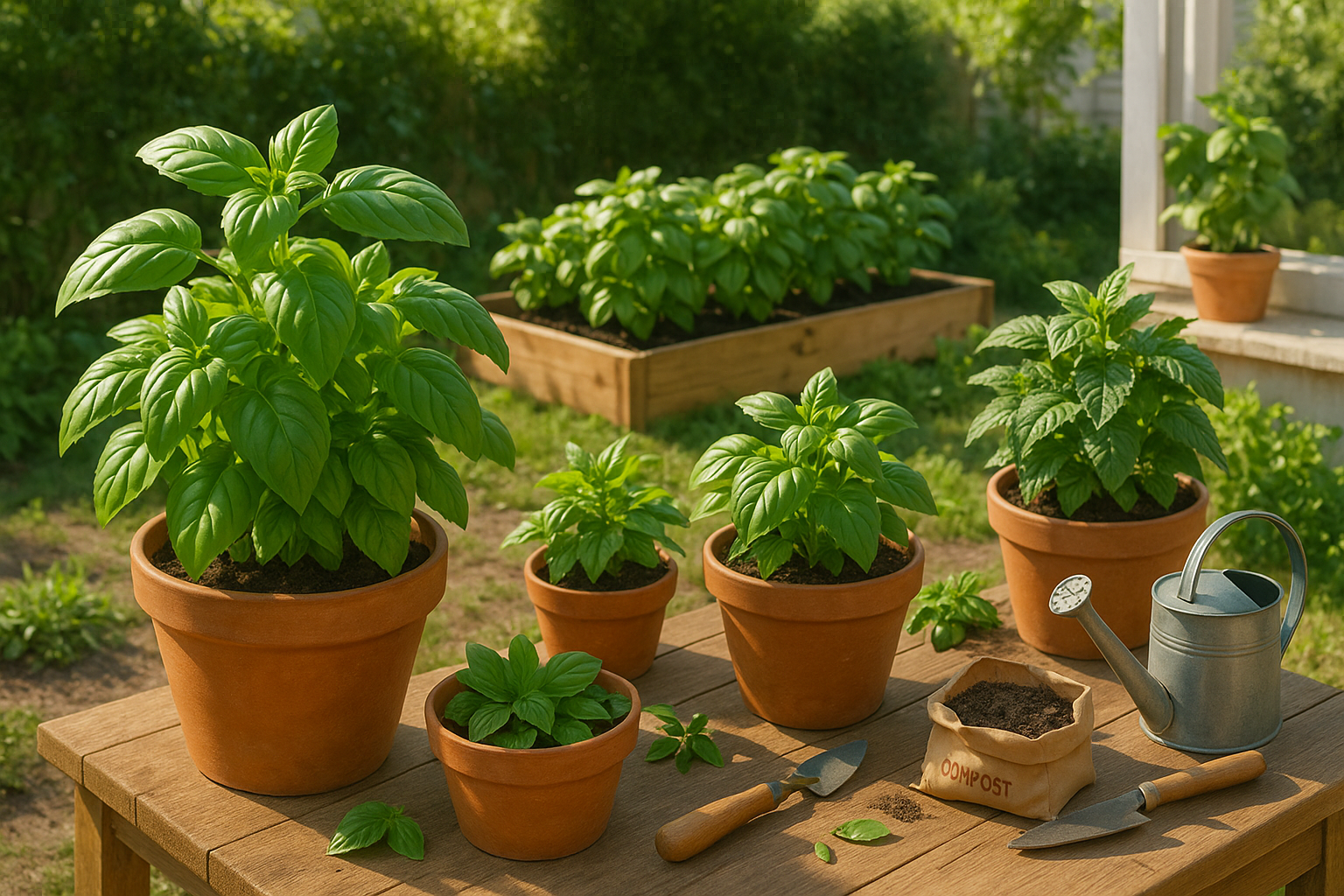Introduction
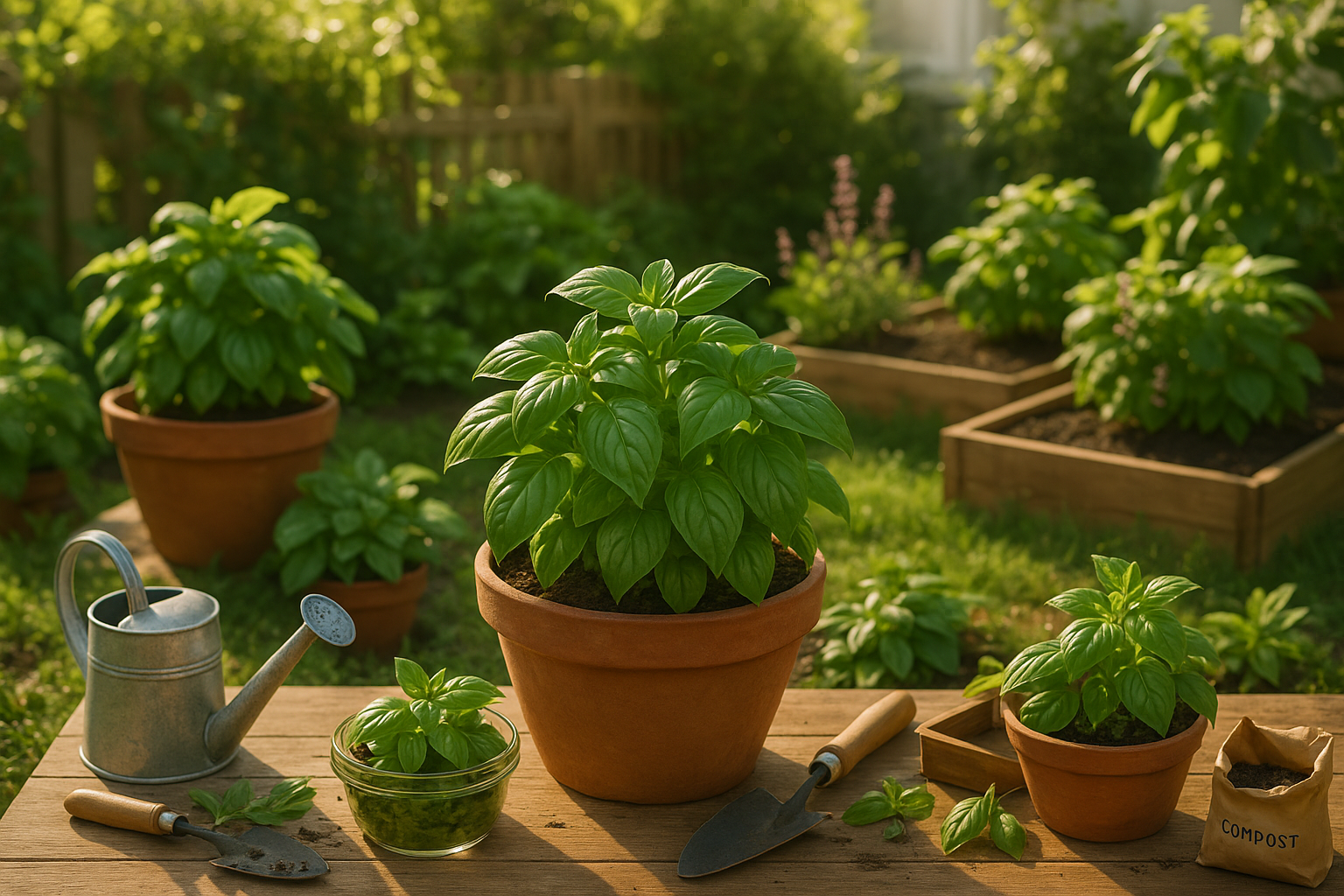
When it comes to growing fragrant, lush basil at home, choosing the best soil for basil can make all the difference between a thriving herb garden and struggling plants. Basil is loved by home gardeners and chefs alike for its vibrant flavor and versatility in dishes—from pesto to salads. If you’ve ever wondered why your basil leaves aren’t as abundant or flavorful as you’d like, soil quality could be the culprit.
Healthy basil depends on more than just sunlight and water; the right soil mix is crucial for strong roots and vigorous growth. Whether you’re growing basil in pots on your balcony or directly in the garden bed, understanding the best soil for basil—one that offers proper drainage, balanced nutrients, and aeration—will set your plants up for success.
In this guide, we’ll dive into the must-have ingredients for an ideal basil soil mix, step-by-step tips for preparation, and practical advice based on real-world gardening experience. By the end of this post, you’ll feel confident crafting the perfect foundation for your basil, ensuring your next Caprese salad bursts with fresh, homegrown flavor.
Understanding Basil’s Soil Needs
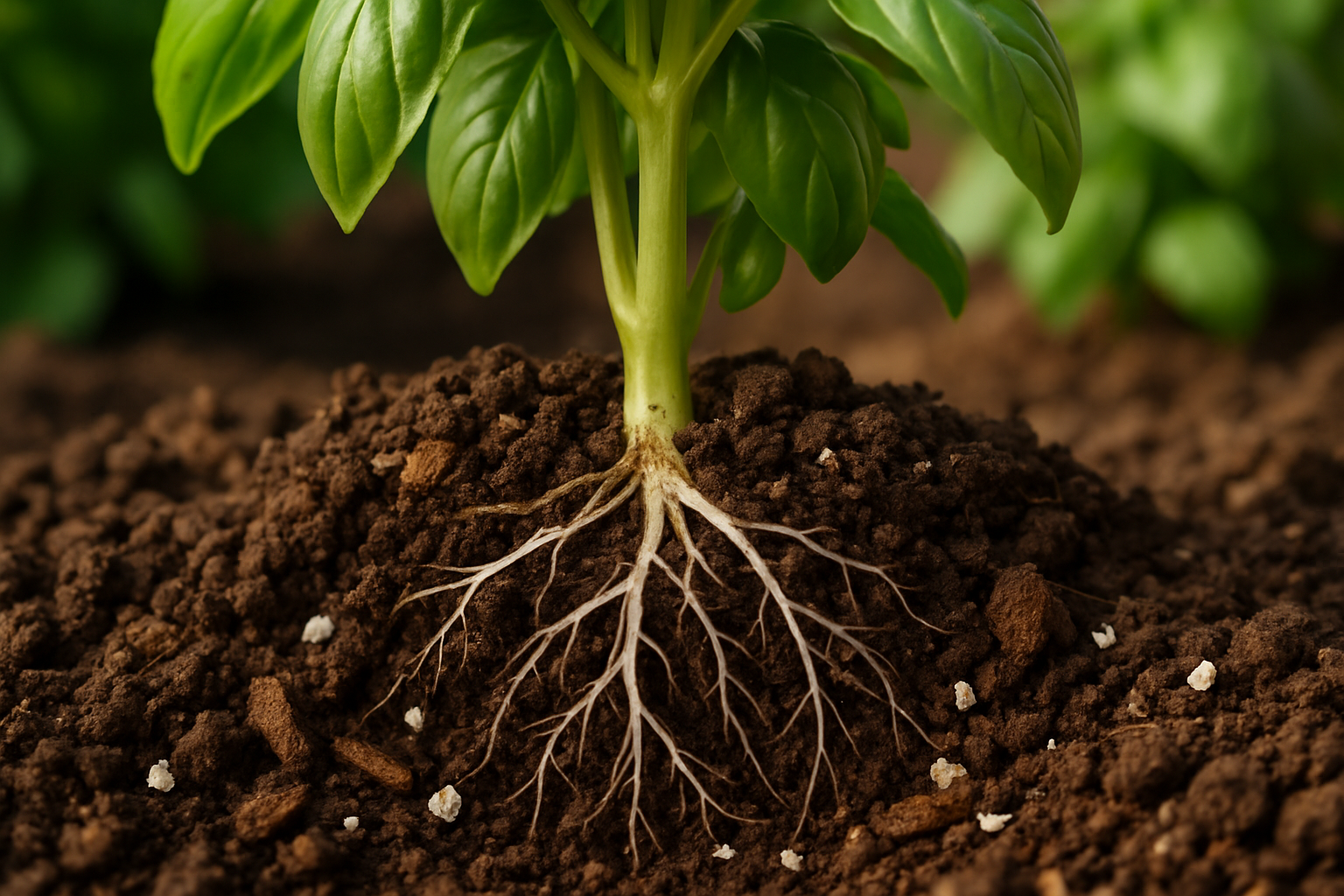
Growing healthy, flavorful basil starts with understanding its need for the right soil and environment. Basil thrives in a spot with full sunlight—at least six hours a day—and prefers warm temperatures, ideally between 70°F and 85°F. The most critical factor, however, is well-draining soil.
If the soil holds too much water, basil’s roots can suffocate, often leading to yellowing leaves or even root rot, both signs that your plant isn’t happy. To give basil the best start, plant it in a loose, nutrient-rich mix that contains plenty of organic matter, such as compost, and ensure your pots or garden beds drain excess water easily.
Poor or compacted soil can prevent roots from getting the oxygen they need, weakening the plant and making it more susceptible to pests and diseases. You’ll notice the difference in basil growing in ideal soil—not just in lush, green leaves but also in its aromatic, robust flavor.
An easy real-world tip: if you’re growing basil in pots, use a standard potting mix combined with perlite or vermiculite for extra drainage. If you’re gardening in the ground, work compost into your garden soil before planting. Lastly, avoid overwatering; let the soil dry slightly between waterings to keep those roots healthy and your basil vibrant.
By paying attention to these basic soil needs, you’ll enjoy stronger plants and a tastier harvest.
Components of the Best Basil Soil Mix
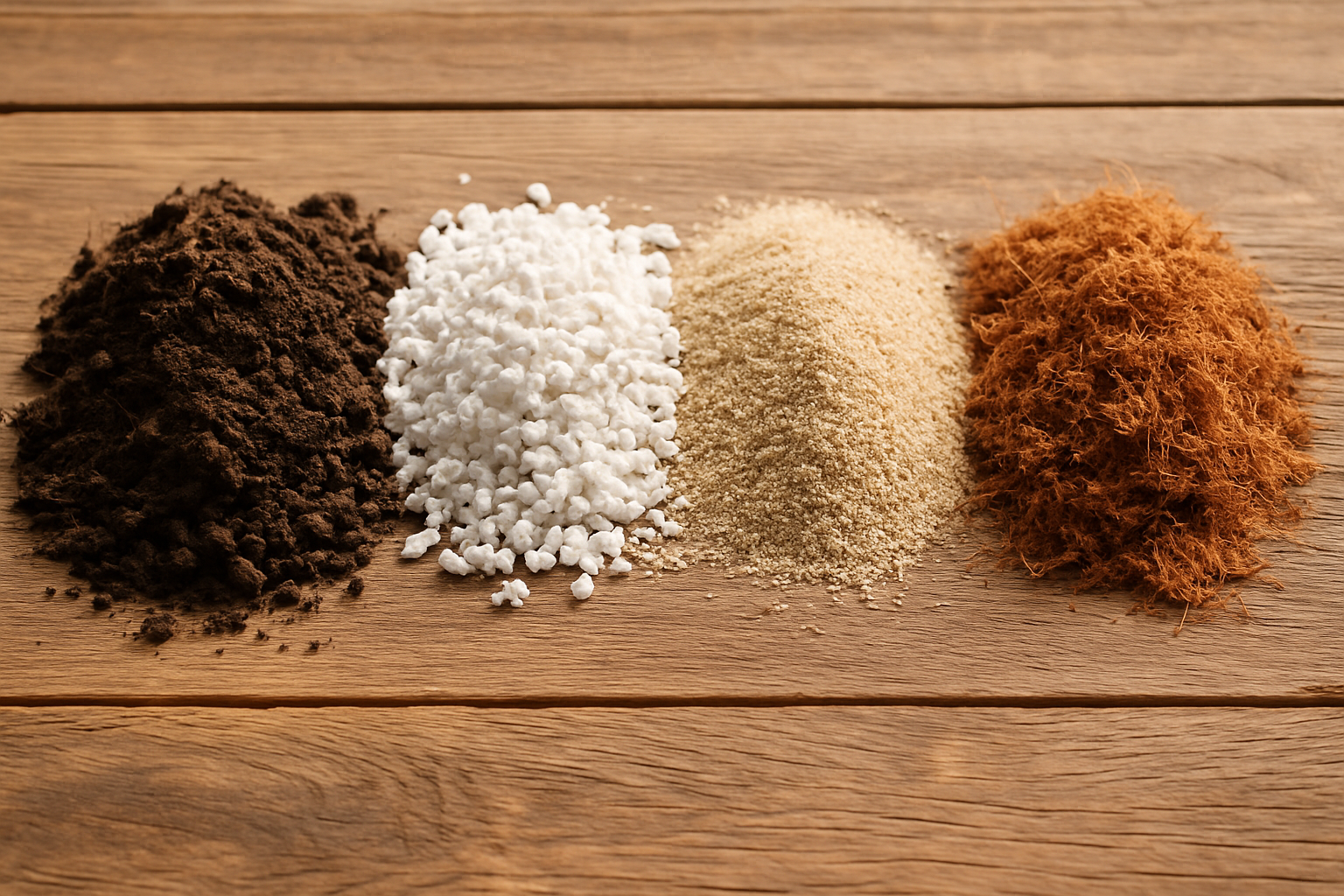
Creating the best soil mix for basil starts with understanding the crucial components that support healthy growth: texture, structure, pH level, and overall fertility. Basil thrives in soil that’s loose and well-aerated, which helps its roots spread easily and absorb nutrients efficiently.
The texture of the soil should be light and crumbly, avoiding heavy clays that can suffocate roots or compacted soil that restricts airflow. Aim for a slightly acidic to neutral pH, ideally between 6.0 and 7.0, since this range allows basil to access the widest spectrum of nutrients.
Good drainage is non-negotiable—soggy roots spell trouble for basil, leading to rot and stunted growth. To ensure effective drainage, blend in materials like perlite, coarse sand, or pumice; these create little pockets of air and pathways for excess water to exit, keeping roots dry but not parched.
Fertility is also key, and that’s where organic matter comes in. Mixing in compost or coconut coir not only supplies steady nutrition but also helps the soil retain just enough moisture without becoming waterlogged. Compost is full of slow-releasing nutrients, while coconut coir offers excellent water-holding capacity with a light texture.
For real-world success, try a combination like two parts high-quality potting soil, one part compost, and one part perlite or coarse sand. This blend gives basil the loose structure, balanced moisture, ample nutrition, and fast drainage it needs to flourish. Regularly topping the soil with a bit of extra compost throughout the season can keep plants thriving without chemical fertilizers.
Ultimately, investing a little thought into your soil mix pays off with bushy, fragrant basil ready for harvest all summer long.
DIY Basil Soil Mix Recipes
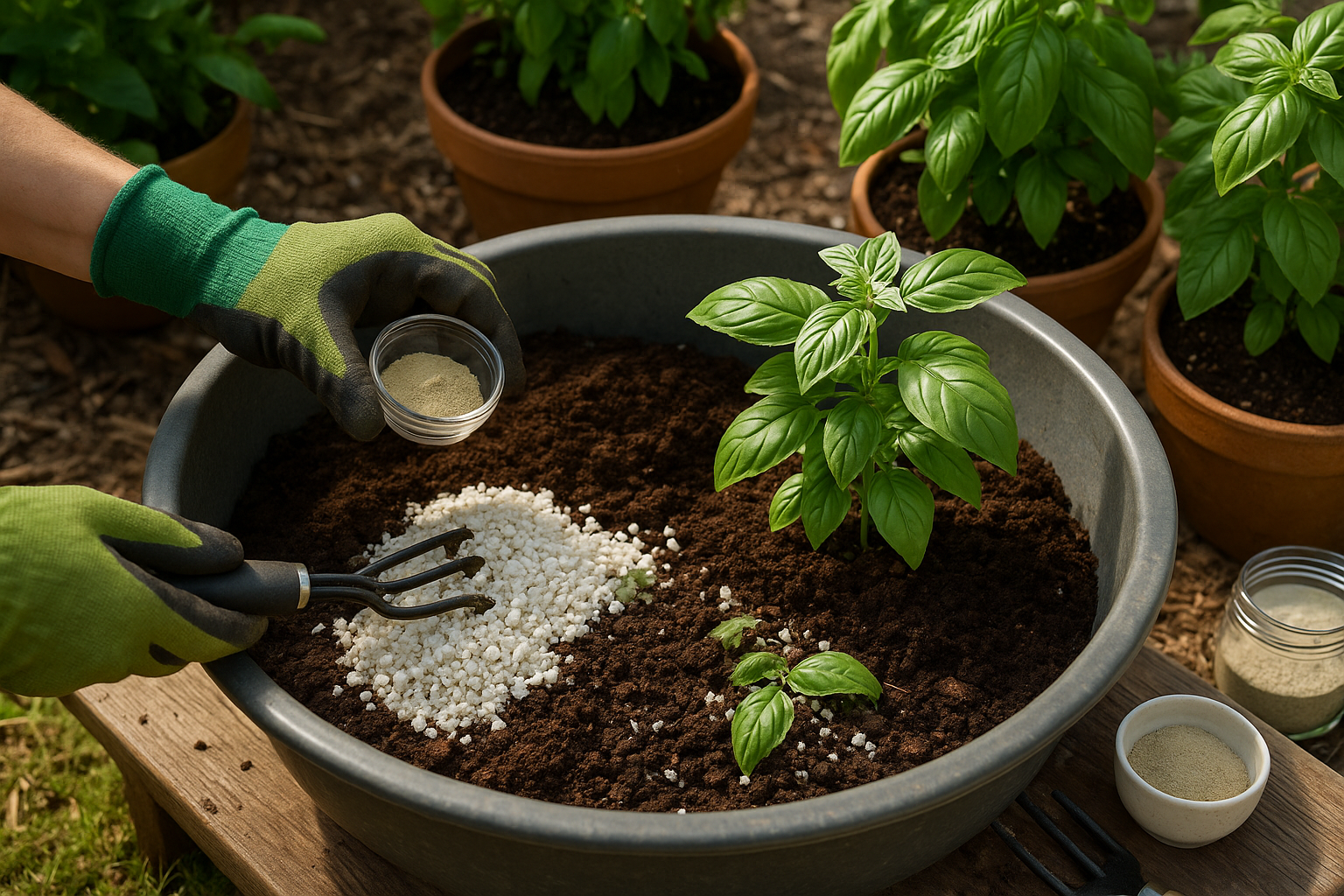
Growing healthy basil starts with the right soil mix, whether you’re planting in containers or directly in the garden.
For container basil, try a simple recipe: combine 2 parts high-quality potting soil, 1 part finished compost, and 1 part drainage material like perlite or coarse sand. This ensures roots get both nutrients and enough oxygen, preventing sogginess. To boost growth, add a tablespoon of dolomitic lime per gallon of mix to balance pH and provide calcium—especially helpful if your water or compost is acidic.
In-ground basil thrives in slightly richer, loamier soil. Mix equal parts garden soil and compost, then add about 20% drainage amendment (perlite, coarse sand, or even fine bark chips). If your garden soil is clay-heavy, increase the drainage amendment to up to 40% to avoid soggy roots. For sandy soils lacking nutrients, use more compost and less drainage material.
In hot, dry climates, coconut coir or peat moss helps retain moisture—swap out up to 30% of the potting soil for these. In humid areas, lean toward more drainage amendments to prevent fungal issues.
Always moisten your mix before planting and adjust based on how quickly it dries out:
- Fast-drying mixes need more organic matter.
- Slow-draining mixes benefit from added sand or perlite.
No fancy ingredients nearby? Local leaf mold or well-rotted manure can substitute for compost, and small gravel or rice hulls can replace perlite. Experiment a little each season to find the ideal blend for your location and materials—happy basil means fragrant pesto all summer long!
Tips for Preparing and Maintaining Basil Soil
Preparing the right soil is key to growing healthy basil, starting with loosening the soil to a depth of at least 8 inches. Use a garden fork or tiller to break up compacted earth—basil’s roots like to breathe and need space to stretch.
Next, mix in plenty of organic amendments such as compost, aged manure, or worm castings. These boost nutrients and help the soil retain enough moisture without becoming waterlogged. If your soil is heavy clay or very sandy, add some coarse sand or peat moss to improve both drainage and aeration.
Throughout the growing season, check the top inch of soil regularly and water deeply whenever it starts to feel dry, but avoid soaking—basil doesn’t like soggy roots.
To keep the soil fluffy and healthy, gently cultivate around the plants every few weeks, breaking up any crust that forms on the surface. For organic feeding, side-dress basil with compost or a balanced organic granular fertilizer once a month to encourage lush, flavorful growth.
Finally, mulching the soil with straw, shredded leaves, or cocoa hulls helps keep moisture in, suppresses weeds, and slowly adds organic matter as it breaks down. These simple steps will help your basil thrive with minimal fuss, no matter your gardening experience.
Common Soil-Related Basil Problems and Solutions
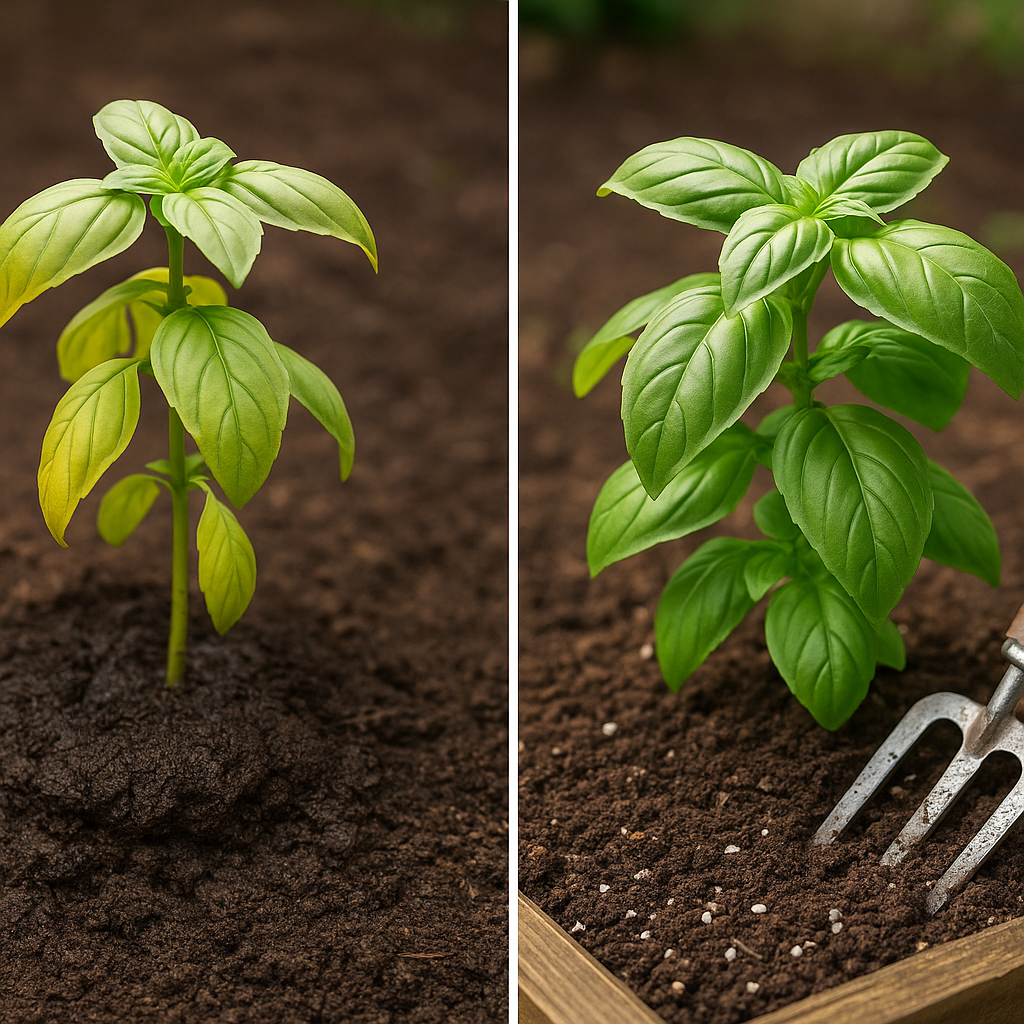
Soil issues are often the culprit behind struggling basil plants, showing up as weak growth, yellowing leaves, or droopy stems. Compacted soil restricts root expansion and airflow, making it difficult for basil to thrive. To prevent this, gently loosen your soil before planting and avoid excessive walking or placing heavy pots on garden beds.
Waterlogging is another frequent problem, especially if your soil doesn’t drain well. Basil hates “wet feet,” so use well-draining, loamy soil, and consider mixing in perlite or coarse sand for potted plants.
If your basil looks pale or the leaves are stunted, a lack of nutrients could be the cause. Boost mid-season soil health by sprinkling in compost or using a balanced organic fertilizer. For a quick fix, apply a liquid seaweed or fish emulsion to help revive stressed plants. Mid-season, gently scratch fresh compost into the top inch of soil to refresh nutrient availability without disturbing the roots.
Always water in the morning to reduce disease risk and allow foliage to dry quickly. If your basil is really struggling, don’t hesitate to uproot it, amend your soil with organic matter, and replant.
Remember, healthy soil is the real secret to bushy, flavorful basil—take a moment to check conditions regularly, and your herb plants will reward you.
Conclusion and Quick Reference Table
Choosing the best soil mix for basil means balancing good drainage, moisture retention, and nutrient content. The ideal blend usually contains equal parts of high-quality potting soil, compost for nutrients, and perlite or coarse sand to improve drainage. Basil doesn’t thrive in heavy, clay-like soil or when roots stay soggy, so make sure your mix feels light and crumbly.
Regularly check moisture with your finger—water only when the top inch of soil is dry. Keep in mind that conditions vary: factors like pot size, light, and your local climate can all affect how your basil grows. If you’re new to gardening, try mixing small batches and planting a few pots with different combinations to see what helps your basil flourish.
Over time, you’ll notice subtle differences—maybe one plant looks greener or another grows fuller leaves. Personal observation is your secret weapon, so adjust ingredients as you learn what works best. Use the quick reference table below whenever you’re preparing your next batch of basil-friendly soil:
| Ingredient | Purpose | Key Tips |
|---|---|---|
| Potting Soil | Base, holds moisture | Use organic, light blends |
| Compost | Nutrients and microbes | Add 25-35% for best results |
| Perlite/Sand | Improves drainage | Mix in to prevent soggy roots |
| Worm Castings | Gentle fertilizer | Optional, boosts growth |
